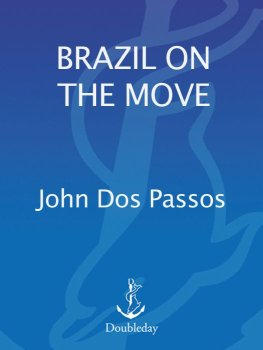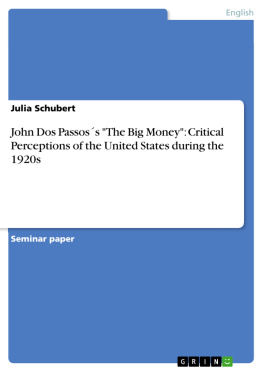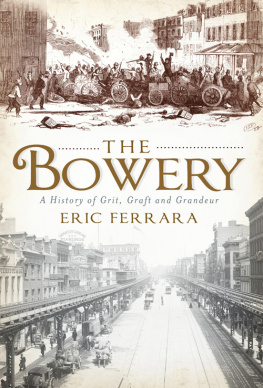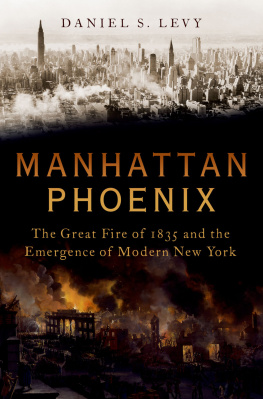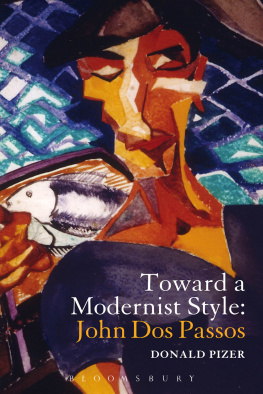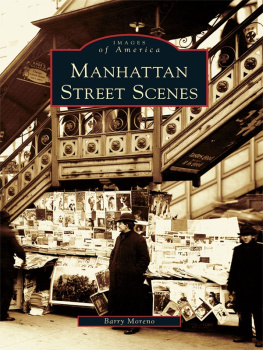Manhattan Transfer
by
John Dos Passos
With an Introduction by Jay McInerney
John Dos Passos was born in Chicago in 1896 of Portuguese descent. His father was an eminent lawyer and he was educated at the Chaote School and then at Harvard, graduating in 1916. After the First World War during which he served in the US Army Medical Corps he was a freelance correspondent in Spain and the Near East before settling down to the writing of books. In 1922 he published a volume of poetry and a collection of essays which explored the Spanish culture. In 1925 he published Manhattan Transfer his first experimental novel in what was to become his peculiar style a mixture of fact and fiction. He began his panoramic epics of American life with the USA trilogy written using the same technique and tracing, through interwoven biographies, the story of America from the early twentieth century to the onset of the Depression in 1929. Then came the District of Columbia trilogy, which is a fictionalized social history of America in the thirties and forties. During the Second World War Dos Passos became a war correspondent in the Pacific for Life Magazine.
In later years John Dos Passos published a number of historical works dealing with the founding of the United States: The Ground We Stand On, The Head and Heart of Thomas Jefferson, The Men Who Made This Nation and The Shackles of Power.
His most permanent home was his fathers farm in Tidewater, Virginia. He died in 1970.
Jay McInerney was born in 1955. He has written fiction for magazines such as Esquire and Atlantic and is the author of the novels Bright Lights, Big City; Ransom; Story of My Life; Brightness Falls; The Last of the Savages and Model Behaviour, a number of which are published in Penguin. He also edited The Penguin Book of New American Voices and he wrote the screenplay for the film version of Bright Lights, Big City.
John Dos Passoss Manhattan is hardly the ruddy, provincial cosmos with which Walt Whitman proudly identified himself some four score years before, or the genteel nineteenth-century village of American aristocrats that Henry James eulogized in The American Scene. It could be argued that the American Civil War was to change New York far more than those Southern cities that were destroyed in battle, beginning with the anti-draft riots in 1863, as it became headquarters for the juggernaut of American capitalism in the second half of the century. Although many Americans wish it had been New York that had tried to secede from the Union, and that the attempt had been successful, the city has almost always been, in literature and popular consciousness, a synecdoche for the land of opportunity, the portal for the immigrant to the New World, the stage of the American dream of success, the brain of the body economic.
Published in 1925, the same year as Fitzgeralds Great Gatsby, Manhattan Transfer gives us a very different view of the era and of those islands at the edge of the New World first glimpsed by Dutch sailors some three hundred years before, though in retrospect both novels seem to have anticipated the Great Depression. Fitzgerald, who was more interested in individuals than in political and economic analysis, was able to unveil the illusion of Gatsbys version of the American dream even as he lyrically celebrated the power of the dream, illustrating his own notion that it is the mark of a first-rate mind to hold two contrary ideas at once. Almost alone among American novelists, Dos Passos as an artist was more interested in society than in the individuals who composed it, more interested in history than in psychology, though his sympathies were always with the men and women who were the victims of historical and social forces. The novel aptly takes its title from the city, as Fitzgeralds does from the individual. For Dos Passos, American individuals are processed by the economic machine of the city, like the new arrivals to New York described in the opening passage of the novel: men and women press through the manuresmelling wooden tunnel of the ferryhouse, crushed and jostling like apples fed down a chute into a press.
The first extended scene in the novel takes place in the maternity ward of a metropolitan hospital, moments after a birth. The newborn baby squirmed in the cottonwool feebly like a knot of earthworms. This image amplifies the feeling of the helplessness of the individual and, in its turn to the plural, betrays Dos Passoss tendency toward a collective overview of the species. Later, when the excited father asks, How can you tell them apart nurse? the nurse responds, Sometimes we cant. The hysterical mother becomes convinced she has the wrong baby, a fear which is alluded to as the child, Ellen Thatcher, demonstrates some of the characteristics of a changeling. Ellen is a recurring figure in this novel that embraces scores of characters some of them perhaps inmates of that same maternity ward one of the few constants in the dizzyingly rapid shuttle of the narrative, although her own mobility, and the fluidity of American society, is such that she changes her name from Ellen to Elaine to Helena.
Bud Korpenning, arriving in the city on the ferry from an upstate farm, asks directions of a fellow ferry-passenger, saying, I want to get to the center of things. This search for the center is shared in some degree by all of Dos Passoss New Yorkers, the center of things recurring as a ghostly refrain throughout the novel. For the have-nots the search is inextricably bound up with the idea of success and prosperity:
Pursuit of happiness, unalienable pursuit right to life liberty and All these April nights combing the streets alone a skyscraper has obsessed him, a grooved building jutting up with uncountable bright windows falling onto him out of a scudding sky Faces of Follies girls, glorified by Ziegfeld, smile and beckon to him from the windows And he walks round blocks and blocks looking for the door of the humming tinselwindowed skyscraper, round blocks and blocks and still no door. (p. 327)
There is no door, though the notion of a brilliant focal point of all the citys lights, a shining and accessible temple at the intersection of sophistication and material success, is one which is retailed in the popular press. Of course what you want to do is make every reader feel Johnny on the spot in the center of things explains Ellen in her incarnation as the editor of a womans magazine. A tramp on a park bench cries out in protest against the pictures of beautiful actresses in the newspaper: Them young actresses all dressed naked like that Why cant they let you alone I say If you aint got no work and you aint got no money, whats the good of em I say? The glamorous images and myths of success are the bait with which the hordes are drawn into the great economic machine.
We get brief glimpses of those who would seem to operate the machine, politicians and capitalists for whom news of the Great War is significant only insofar as it affects the Stock Market and the elections (men like Dos Passoss father, a powerful corporate lawyer who sired the novelist out of wedlock and did not acknowledge paternity until many years later). But these movers and shakers are themselves raised and cast aside by the forces they manipulate. Gus McNiel, a milkman, becomes a powerful and cynical political boss, while Joe Harland, who once controlled half of Wall Street, becomes a Bowery Bum.
Although he was interested in Marxism, Dos Passos was never to become a Communist; Manhattan Transfer is a passionate but not a systematic critique of American capitalism in the early twenties. The execution of Sacco and Vanzetti in 1927 was to further radicalize the novelist and provide the impetus for his masterpiece, the



